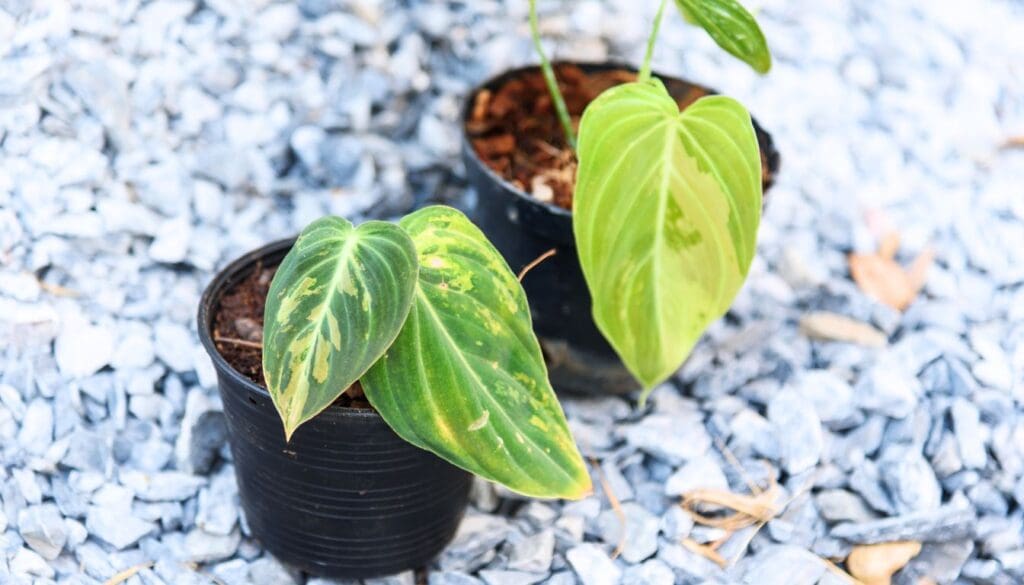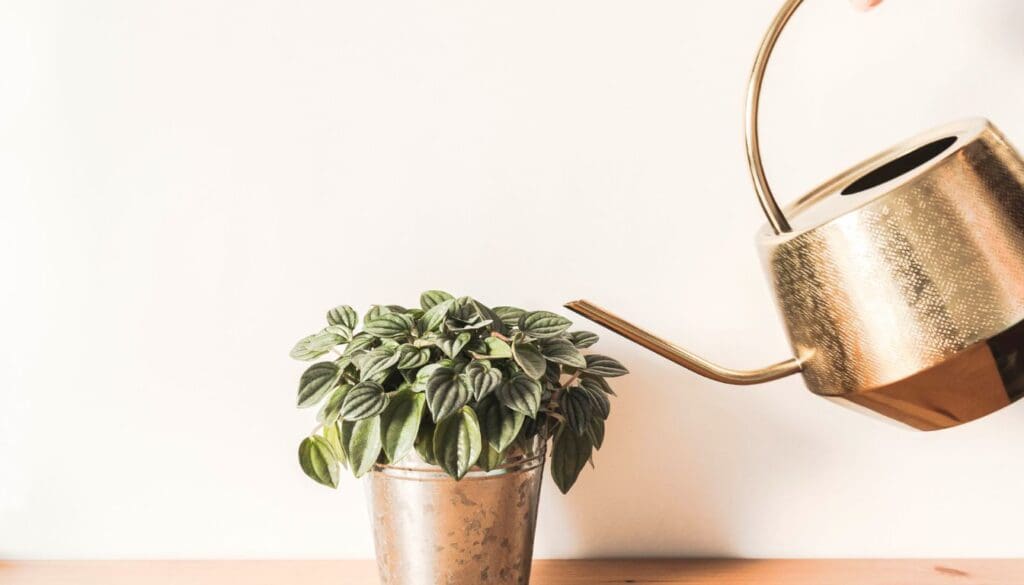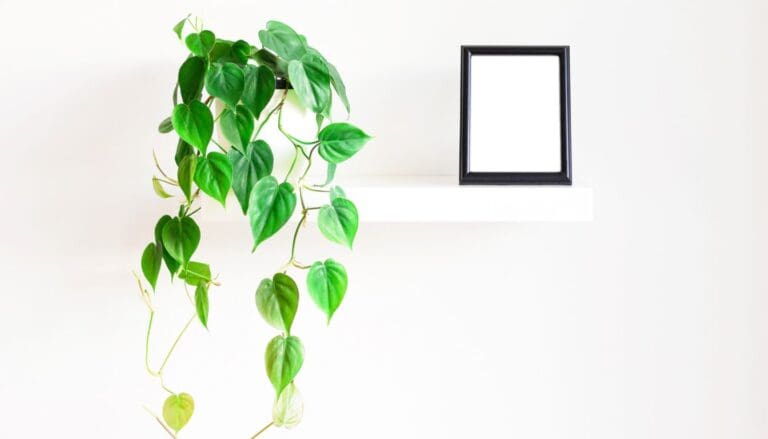How To Treat Leaf Spot On Philodendron? (Causes+Treatment)
Philodendrons are the indoor plants that give your interior garden a green and beautiful look. These are hardy plants and require little care. But they do need an adequate amount of air, water, and sunlight.
But, if you overwater your philodendron and keep it in low light conditions, you might notice brown or black spots on the foliage. This can be a sign of leaf spot disease on your philodendron. Leaf spot disease is caused by bacteria or fungi that thrive in a damp environment.
To treat leaf spot on philodendron, stop top watering the plant and use a mixture of two tablespoons of baking soda and one drop of dish soap to water. Spray this on affected parts and keep the plant away from direct sunlight. Using commercial fungicides can also help in treating the infection.
This disease can be hard to treat, so try to prevent it before it affects your philodendron. But if you already have an affected philodendron with the leaf spot disease, worry not. We will discuss the ways of saving your philodendron from the leaf spot disease.

Please note: Simplify Plants is reader-supported. Some links in the post are affiliate links and I get a commission from purchases made through links in the post.
Leaf spot disease in philodendron
Sometimes, even after taking the right care of your philodendron, you will notice brown spots on the leaves and yellowing of the leaves. There can be two common leaf spot diseases in philodendron, any of which might be causing these problems.
The two leaf spot diseases found in philodendrons are bacterial leaf spot disease and fungal leaf spot disease. You will notice brown patches on the leaf surfaces. These can make your plant weak with wilted leaves.
The spots start small and slowly spread to the stems and roots of philodendron. If not treated on time, these can kill your philodendron.
Bacterial leaf spot disease
Bacterial leaf spot is a common disease found in the Philodendron family. This is caused due to uninvited bacteria from outside. They especially get attracted due to damp weather. When you give excess water to your philodendron, it makes the soil wet. It is the moment when this bacteria attacks your philodendron.
Identify the symptoms
When your philodendron has the bacterial leaf spot disease, you will notice some signs on the leaves:
- Brown spots with yellow halos around the spots on the leaves.
- Spots are not regular in shape.
- Spots appear in clusters on the surface or below the leaves.
- You will see that the leaves are slowly turning yellow.
When you see the above signs on the leaves, you can ensure that your philodendron has bacterial leaf spot disease.
Causes of bacterial leaf spot
There can be several causes of bacterial leaf spots.
You cannot see these microorganisms that infect the leaves of your philodendron without a microscope. But of course, you can see the signs indicating the disease.
Soggy soil
The first reason that causes bacterial leaf spots is soggy soil. Philodendrons are tropical plants that enjoy a tropical environment. Yes, they enjoy loads of moisture but don’t require excess watering. When your plant is being overwatered, it keeps the soil wet for too long. This is the ideal time for the bacteria to attack your philodendron.
The bacteria multiply very quickly and instantly spread to the leaves and then the whole plant. Such a rapid increase in their growth makes them more contagious, which brings us to the next point.
Also read: What Type Of Soil Does A Philodendron Need? (Best Soil Mix)
Affected from another plant
If your philodendron is placed near another houseplant suffering from bacterial leaf spot disease, the bacteria can spread to your plant in no time.
Bacteria spread very fast, and once they attack your philodendron, they can spread faster than you can imagine.
How to fix bacterial leaf spot disease?
First and foremost, when you notice the symptoms for the first time, isolate the plant. It would be best to keep it away from the other plants.
As this disease is contagious, keeping the affected plant away will be safe for the other plants.
Next, you should remove the affected parts of the plants. Prune the affected leaves with a sterilized scissor or pruner to avoid affecting the leaves in a good state.
Create a solution. Add two tablespoons of baking soda and one drop of dish soap to water. Mix this and apply it to the affected areas of the plant.
Try to avoid overhead watering. It will restrict the moisture to sit on the leaves of your philodendron.
Maintain the appropriate temperatures suitable for your philodendron. Make sure they get indirect sunlight and good airflow. These will stop the disease from happening again.
Keep checking the soil to determine if it retains excess moisture because that would dampen the soil. Wait until the soil dries out, then water your plant.
Fungal leaf spot disease

Fungal leaf spot disease is caused due to fungi coming from the outside world. These fungi come via wind, rain, or contaminated soils. Excess moisture is ideal for their survival.
Possible symptoms
It might be confusing at times to identify the signs that will indicate this disease. But, there are some signs with which you can identify this disease.
- You will notice brown spots on the surface of the leaves.
- These spots will start spreading and cause discoloration.
- The spreading will progress from the leaves to the stems and roots of the plant.
- New growth will also have brown spots and will fail to survive.
Causes of fungal leaf spot disease
One of the main causes of this disease is that the pathogens get transferred from the outside world through wind, rain, and contaminated soil.
Two conditions encourage the growth of these fungi.
Overwatering
When your philodendron receives too much water, these fungi attack the plant. Overwatering makes the soil wet, and the fungi thrive in that soil.
It starts affecting the leaves, slowly progressing towards the stems and roots of the plant.
Poor drainage system
A poor drainage system – lack of drainage holes, a heavy soil mix, or both, can cause overwatering even if you water the philodendron correctly.
This situation keeps the soil and the plant wet and moist for a long time. This is the perfect condition for the disease to spread.
How to fix fungal leaf spot disease?
First, separate your philodendron and keep it away from the other plants to prevent the spread of the disease.
Prune out the affected leaves.
Use a fungicide to treat the fungal leaf spot disease. You can add half a teaspoon of baking soda with one gallon of water and apply it to the plant. Apply it on the surface and bottom of the leaves and the stems of the infected leaves.
Take steps immediately if you notice any possible sign of this disease. This will help to prevent the disease from spreading.
How to prevent leaf spot disease?
One thing you must remember is it is very difficult to get rid of these diseases. You cannot undo something that is done. Instead, you can treat and fix the problem. You can stop it from spreading. But it might still appear.
So, to prevent the diseases from appearing again, you must take some steps.
Let us read about the steps that we can take to prevent the diseases.
Avoid overwatering
One of the main reasons for these diseases is overwatering. When you overwater your plants, the soil fails to drain the excess water.
The plant fails to absorb so much moisture. This dampens the soil, which is ideal for the growth and spread of the leaf spot disease.
So you shouldn’t overwater your philodendron. Water only when the soil gets dry. Maintain gaps in between the waterings.
Also read: How Much Water Does A Philodendron Need? (Water Requirement+How Often)
Avoid overhead watering

The bacteria and fungus sit on the surface of the leaves and slowly spread the disease onto the whole plant. It is better to avoid overhead watering.
It means that instead of water from the top, water your plant near the soil. When you water from the top, it sits on the leaves and damps them, due to which the bacteria and fungus remain in the damp leaves and start affecting the leaves. So, it is better to water your plant close to the soil.
Proper ventilation
Proper air circulation is another way of avoiding leaf spot disease.
Keep your plant in an open space to promote proper air circulation.
Another thing you can do is to remove the dust around the roots of your plant. This helps create air pockets that will encourage proper air circulation for your philodendrons.
Check before purchasing
Sometimes, we don’t check the plants before purchasing them.
We might buy an infected plant without even knowing. That infected plant will infect the plant more and will slowly spread to the other plants.
So you must check your philodendron while buying it. Check whether there are any signs of these diseases or not.
Final words
You should take good care of your philodendron and prevent leaf spot disease by taking preventive measures.
Do not overwater the plant, and avoid overhead watering. Maintain gaps in between watering.
Let the soil dry up before you water the plant again. Give your philodendron enough indirect light and proper aeration.
Prune the affected parts and treat your plant with horticulture oils and fungicides when affected.
Lastly, check the plants before buying them. You won’t want to affect other plants by buying a diseased plant.
Ref: Wikipedia.
Recommended Garden Supplies
| Product Image | Our Recommended Gardening Supplies | Check Offers! |
|---|---|---|
Top Top
Top
Top
Top
Top
Top
Top
Top | rePotme Houseplant and Tropical Classic Potting Soil Mix | Check Offer On Amazon |
 Top
Top
Top
Top
Top
Top
Top
Top | Espoma Organic Indoor Plant Food | Check Offer On Amazon |
 Top
Top
Top
Top
Top
Top
Top
Top | GooingTop LED Grow Light 6000K Full Spectrum Clip Plant Growing Lamp | Check Offer On Amazon |
 Top
Top
Top
Top
Top
Top
Top
Top | Soil Moisture Meter | Check Offer On Amazon |
 Top
Top
Top
Top
Top
Top
Top
Top | Govee Hygrometer Thermometer, Bluetooth Enabled! | Check Offer On Amazon |
 Top
Top | LEVOIT Humidifiers for Large Room(Best For Plants) | Check Offer On Amazon |
 Top
Top
Top
Top
Top
Top
Top
Top | Upgraded DIY Automatic Drip Irrigation Kit, 15 Potted Houseplants Support | Check Offer On Amazon |
 Top
Top
Top
Top
Top
Top
Top
Top | Stainless Steel Heavy Duty Gardening Tool Set | Check Offer On Amazon |
 Top
Top
Top
Top
Top
Top
Top
Top | Bonide Insecticidal Soap | Check Offer On Amazon |
 Top
Top
Top
Top
Top
Top
Top
Top | Bonide 32 oz Spray Neem Oil for Organic Gardening | Check Offer On Amazon |
 Top
Top
Top
Top
Top
Top
Top
Top | Garden Safe Fungicide | Check Offer On Amazon |







Can I send you a photo to see if it looks like bacterial leaf spot?
Sure, shoot us a email and we will have a look. Or even better if you share it on our facebook page as reaching back to every email can be a little slow and cumbersome process.